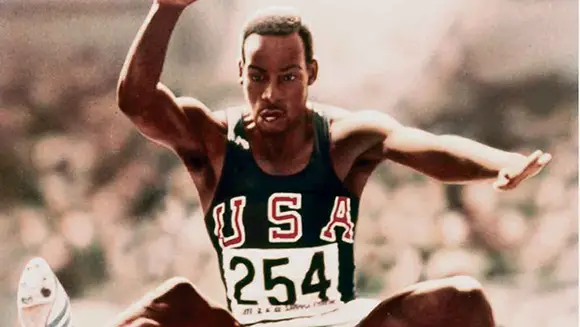
Throughout the week, Guinness World Records is going to be sharing and celebrating historic records from some of the world's most incredible record-breaking Olympians in a new series titled 'Olympic Legends'.
To get you excited about the 2016 Summer Olympics which begins in Rio de Janeiro, Brazil on Friday, we're kicking off the series with long-jumper Bob Beamon.
The year 1968 is widely regarded as one of the most monumental, influential, and historic years in American - and, in many ways, world - history.
It saw the assassinations of Martin Luther King Jr. and Robert Kennedy. The Tet Offensive began in the Vietnam War. Boeing introduced the revolutionary 747 and humans on the Apollo 8 mission orbited the moon for the first time.
Fittingly for a year in which humanity took flight in ways it never had before, Bob Beamon joined the fun, going unprecedentedly airborne at the 1968 Summer Olympics.
On October 18 of that year in Mexico City's Estadio Olímpico Universitario, Beamon broke - no, eviscerated - the record for the Farthest long jump, leaping 8.90 m (29 ft 2.5 in) into history.
Through the retrospective prism that is often afforded to achievement after any iconic performance, so many aspects of Beamon's jump amaze even to this day.
Take, for instance, the fact that Beamon actually misjumped on two of his qualifying attempts, meaning the world was nearly robbed of his eventual legendary exploit. Only after readjusting his approach for a third qualifier did he make it to his ensuing finals showcase.
Or the famous story of how Beamon - an American unfamiliar with the metric system - had no clue what he'd even done after the stadium displayed his astonishing results. After teammates informed him as his feat, Beamon suffered a cataplectic attack that caused his legs to buckle and the newly minted legend to fall to his knees.
But, perhaps most impressively about this record, Beamon demolished the previously incremental progress that served as a hallmark for athletics world records. To wit: between the first official long jump world record was verified in 1901 and Beamon's fateful night in 1968, the most the long jump record had been broken by in any single jump was 15 cm (approx. 6 in). Beamon broke the mark by 55 cm (1 ft 9 in).

The Olympics marked a high point in what had been a peak year for Beamon athletically. He won 22 of the 23 competitions he entered in 1968, having already set a career best of 8.33 m (27 ft 4 in) and a theoretical world record of 8.39 m (27 ft 6.5 in) before the Olympics, even if the latter was ineligible for record-keeping due to favorable wind conditions.
He left no doubts that night in Mexico City, though. And perhaps what his performance left as its most memorable impression was its legacy. The long jump record had been broken or tied 15 times between 1901 and 1968, an average occurrence of every 4 years 5 months. Beamon wouldn't see his record touched for just under 23 years.
The current long jump record holder, Mike Powell (pictured below), would break the record and establish what still remains the high-water mark in the discipline at the 1991 World Championships in Tokyo. His record of 8.95 m (29 ft 4.36 in) is now the longest tenured top spot in the event, but still represents a naturally progressive improvement on the mark before it.

What Bob Beamon did, though - that wasn't evolution. It was mutation, a skipped link in the expected chain of progression. Nobody had ever taken flight like Bob Beamon before 1968. And it's perhaps safe to say no one ever will.
Stay tuned to find out if anyone betters Beamon's record at Rio 2016.
